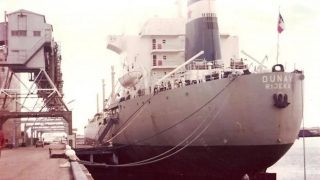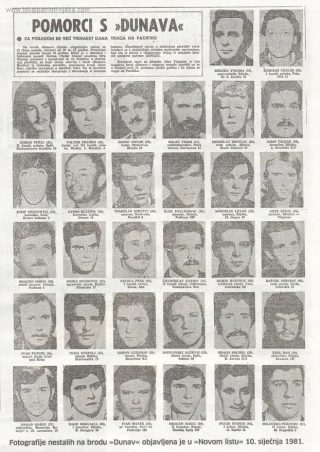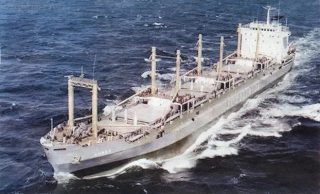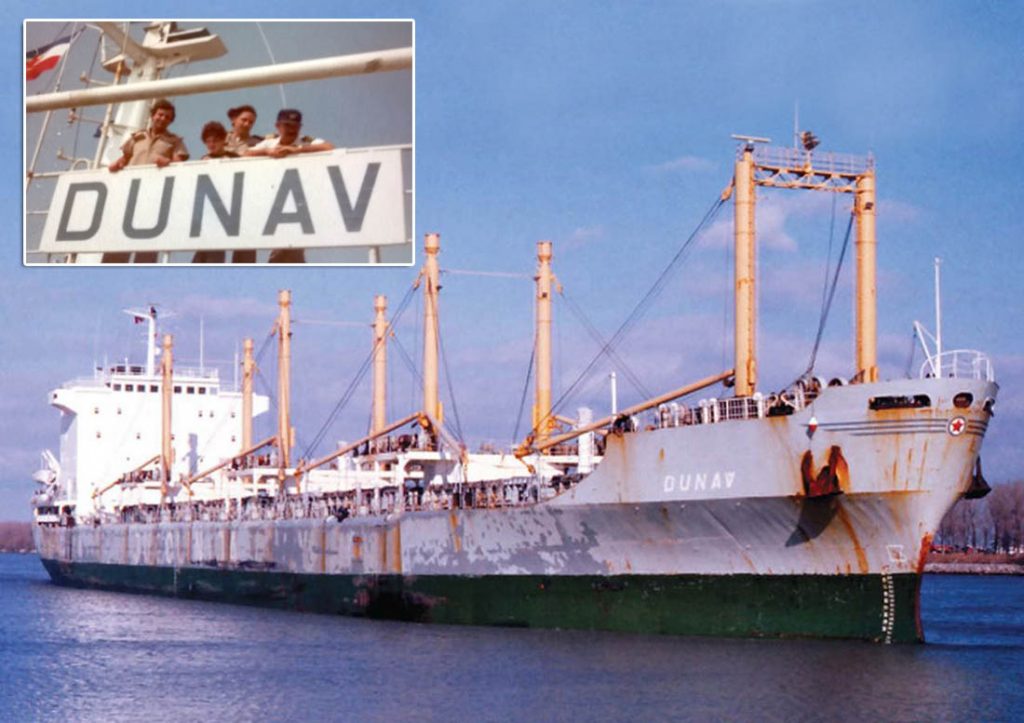They disappeared in a hurricane: Crew and ship end up at the bottom of the ocean…
By Igor ZovkoIva Rebac Wednesday, 22.5.2019. at 6:54 AM

The Dunav ship was the first bulk cargo ship in Jugolinija’s fleet. At the end of 1980, the last message arrived from him. It was sent by radiotelegrapher Milan Tišma…
The biggest and most puzzling tragedy of Croatian seafaring is the disappearance of Jadrolinija’s ship Danube. He disappeared into a Pacific Tomb with 32 crew members. No survivors. Nothing was found on the surface, not a piece of boat, cargo or clothing. There was no human trace. The Danube disappeared without a trace…
In 1980, the Danube was a seven-year-old ship. It was built in La Spezia, Italy, and was used to transport bulk cargo. It was 179 meters long and 22.9 meters wide. It could develop a speed of 15 knots. It had seven compartments in front of the engine room. It was the first bulk cargo ship in Jugolinija’s fleet.

In Panama was loaded cargo. One of the sailors disembarked there from the Danube, and Bartol Perušić (45), an Engineer from Podčudnić, embarked in Long Beach.
The ship left on October 20, 1980 from the Canadian port of Hamilton. He docked at the US port of Hampton Roads, and on December 9 he sailed to Los Angeles, where he filled the fuel supplies necessary for the 6,000-mile voyage across the Pacific Ocean. It was carrying 12,000 tonnes of steel products, 11,000 tonnes of paper and other goods to the Chinese port of Tsingtau.
After 20 days of sailing, the Pacific Ocean ceased to be silent. Winds of 140 kilometers per hour blew from the east, into the bow of the Danube. The waves were huge. The storm raged within an 800-nautical mile radius.
She is due to arrive at her destination on New Year’s Eve
The Danube last gave its exact position on January 23, which was received by the American organization AMVER, which regularly monitors ships. According to the data, it was supposed to arrive at its destination on December 31.

By December 28, 1980, the ship was still in contact with the world. Radiotelegrapher Milan Tišma contacted Jugolinija at around 8pm on December 27th that they had fallen into a severe hurricane and that the waves were about 50 feet high. Around 11:30 p.m., he reported that the hurricane had damaged the ship and that they were headed for the Japanese port of Yokohama. Milan’s brother Bozo was in Jugolinia at the time. That was the last time he heard his brother’s voice.
Dunav managed to be in contact with another Croatian ship, Banija Atlantska plovidba from Dubrovnik. But the hopes of reaching Yokohama were small. The sea penetrated the bow store, the front cranes were broken, and the stability of the ship in such large waves was dangerously impaired.
Everyone was looking for her, but no traces…
It was not until January 2, 1981 that Jugolinija reported that it had no communication with the ship. She eventually made an announcement on January 10, 1981, and officially declared the ship and crew missing. They said the search lasted 14 days.
But it’s not. The search operation was led by Japan’s Maritime Safety Agency, which reported as early as January 4th that they were searching one patrol boat and three aircraft and that, given the negative results, they concluded the search at sunset on January 1, 1981. Later, all the ships that sailed there watched for possible traces, but without results.
That’s where the Japanese tugboat Sun Arrow, which was looking for a piece of the Japanese tanker Onoomici Maru, passed there, and which after meeting the ship of Split’s Adriatic Free Navigation “Moša Pijade” was looking for the Danube on its way back to Japan.
The Captain of the Danube acted according to the rules that require that in case of damage, he should sail to the nearest port of salvation, which was Yokohama. According to some analyses, if the Danube had turned into the stern, downwind it would have sailed into calmer waters. Then he could connect to the bases of the Americans who would help him. Unfortunately, it will remain a secret. It is believed that the Danube rests at the bottom – at 6000 meters deep.
